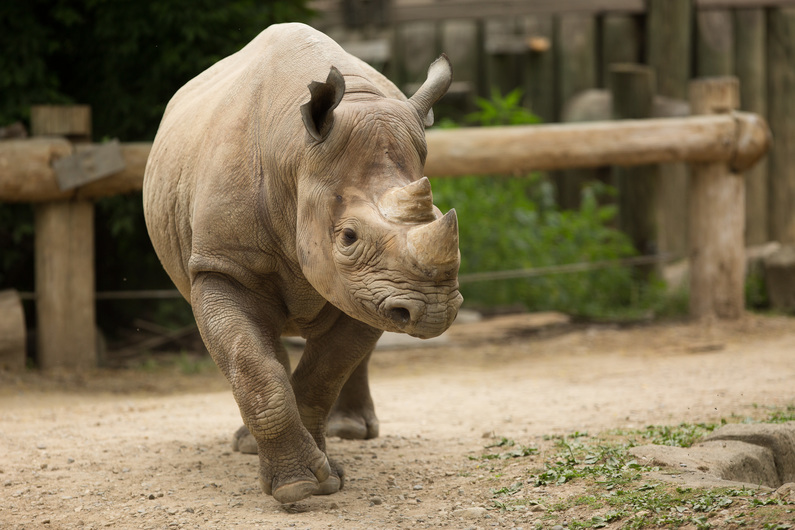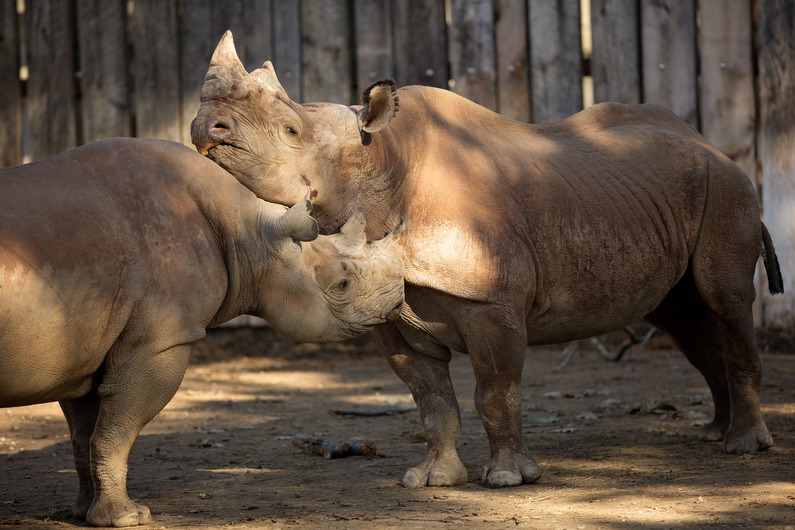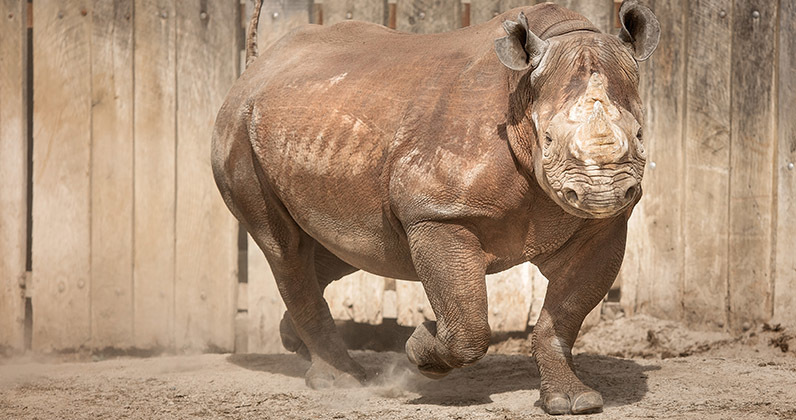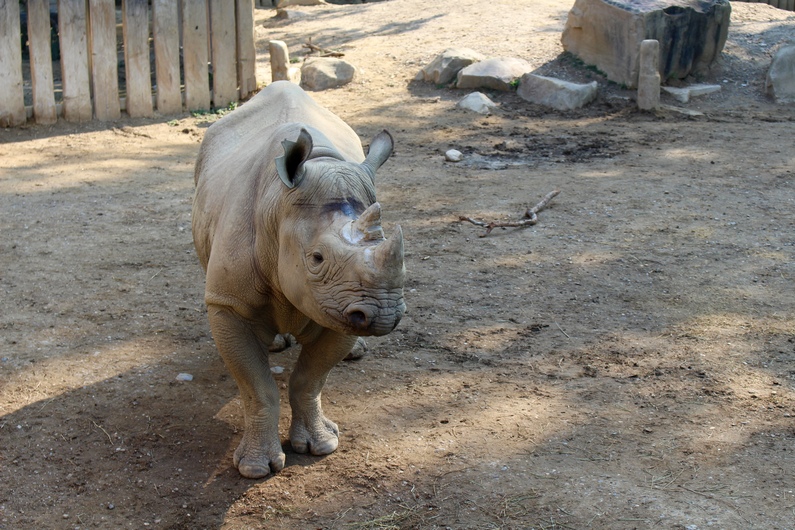In turns out that one Eastern black rhino in Cleveland has become extremely important to her species.
Inge (pronounced Ing-A), a 25-year-old Eastern black rhino, gave birth to the Zoo's second rhino calf on August 20. The new calf joins mom Inge, dad Forrest, aunt Kibibbi and 7-month-old calf Lulu.
“We’re very excited to welcome our second Eastern black rhino calf born here at Cleveland Metroparks Zoo this year,” Zoo Executive Director Christopher Kuhar, Ph.D., said in a press release. “We hope these significant births inspire guests to learn more about this critically endangered species and how they can help protect Eastern black rhinos in the wild.”

Inge at Cleveland Metroparks Zoo
Inge, who also happens to be Kibibbi's mom, has become a valuable link between rhinos in Association of Zoos & Aquariaums (AZA) accredited zoos in North America and her African cousins in the wild.
Due to poaching and habitat loss, the Eastern black rhino population has dwindled to approximately 750 individuals left in the wild in Africa. The Addo Elephant Park in South Africa, a sanctuary where Inge was born, has only 48 individual rhinos left.
In 1997, cooperation between the AZA’s Species Survival Plan (SSP), Cleveland Metroparks Zoo, the Cleveland Zoological Society, Addo Elephant Park and the South African government allowed two Eastern black rhinos to be sent to American zoos. Inge, one of those two, arrived in Cleveland later that year after much negotiation, planning and travel. Because she came from Africa, Inge’s genetics were very desirable to strengthen the genetic diversity of rhinos in North American zoos.
Shortly before Inge’s arrival in Cleveland, the Zoo had changed from caring for white rhinos to our current Eastern black rhinos. Spike was the resident male black rhino when Inge arrived, and Animal Curator Tad Schoffner remembers that Spike was a “highly spirited animal” that ended up being a good match for the calmer Inge. Inge and Spike had two calves – Azizi in 2000 and Kibibbi in 2003, who is still in Cleveland. Spike left Cleveland in 2005 and passed away in 2008.
Jimma was the Zoo’s next male rhino, who arrived from the Potter Park Zoo in Lansing, Michigan in 2005. Jimma and Inge had two calves: Zuri in 2007 and Johari in 2010. Jimma and Kibibbi had Juba in 2012. Jimma was transferred to the Brookfield Zoo in Chicago in 2012, where he passed away in 2013.

Inge (left) with Forrest (right)
Forrest, the Zoo’s current male rhino, came from Busch Gardens in Tampa, Florida, in 2016. We already know he has done his job to help the species, with two calves born this year.
The decision 20 years ago to bring Inge here has proven and will continue to prove how important just one individual is to the overall Eastern black rhino population and species.
This feature was written by Paul Webster, a longtime Zoo volunteer and ZooKeepers Circle member. His favorite animals are elephants and rhinos, and he has a soft spot for Inge.
By the numbers
So how important is Inge? Let’s look at some statistics.
- When Inge arrived in 1997, there were 97 Eastern black rhinos in AZA zoos. According to the 2017 AZA Regional Studbook for Eastern black rhinos, there are now 57 black rhinos in AZA zoos — down 40 individuals in 20 years.
- Inge and her two generations of offspring total 8 of those 57 rhinos, which is 14% of total rhinos in AZA zoos! Of the 16 rhinos born in the past 10 years, 25% carry Inge’s genes. Inge is also the last wild born Eastern black rhino in AZA zoos.
Inge passed away at Cleveland Metroparks Zoo in January 2024.




